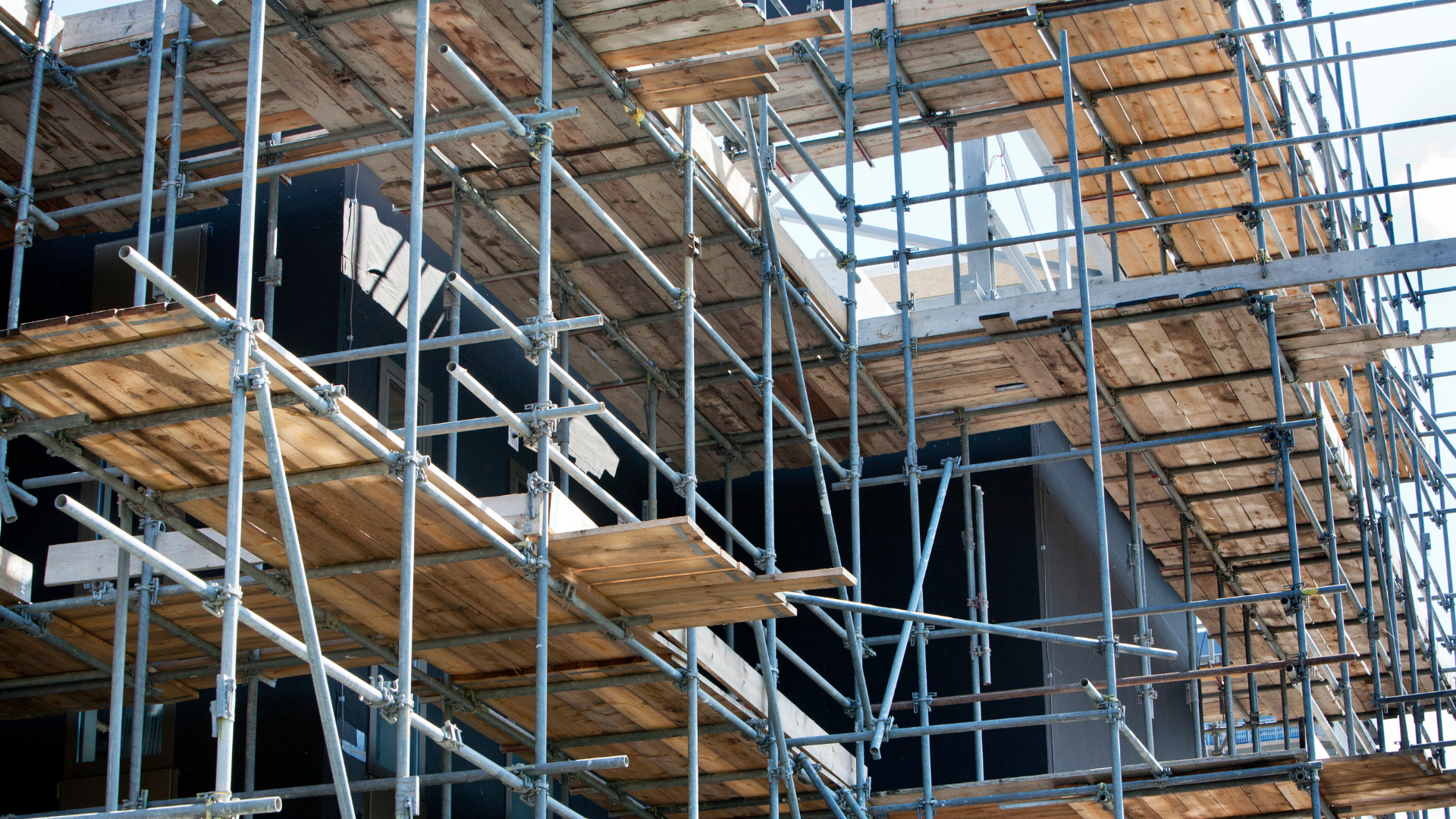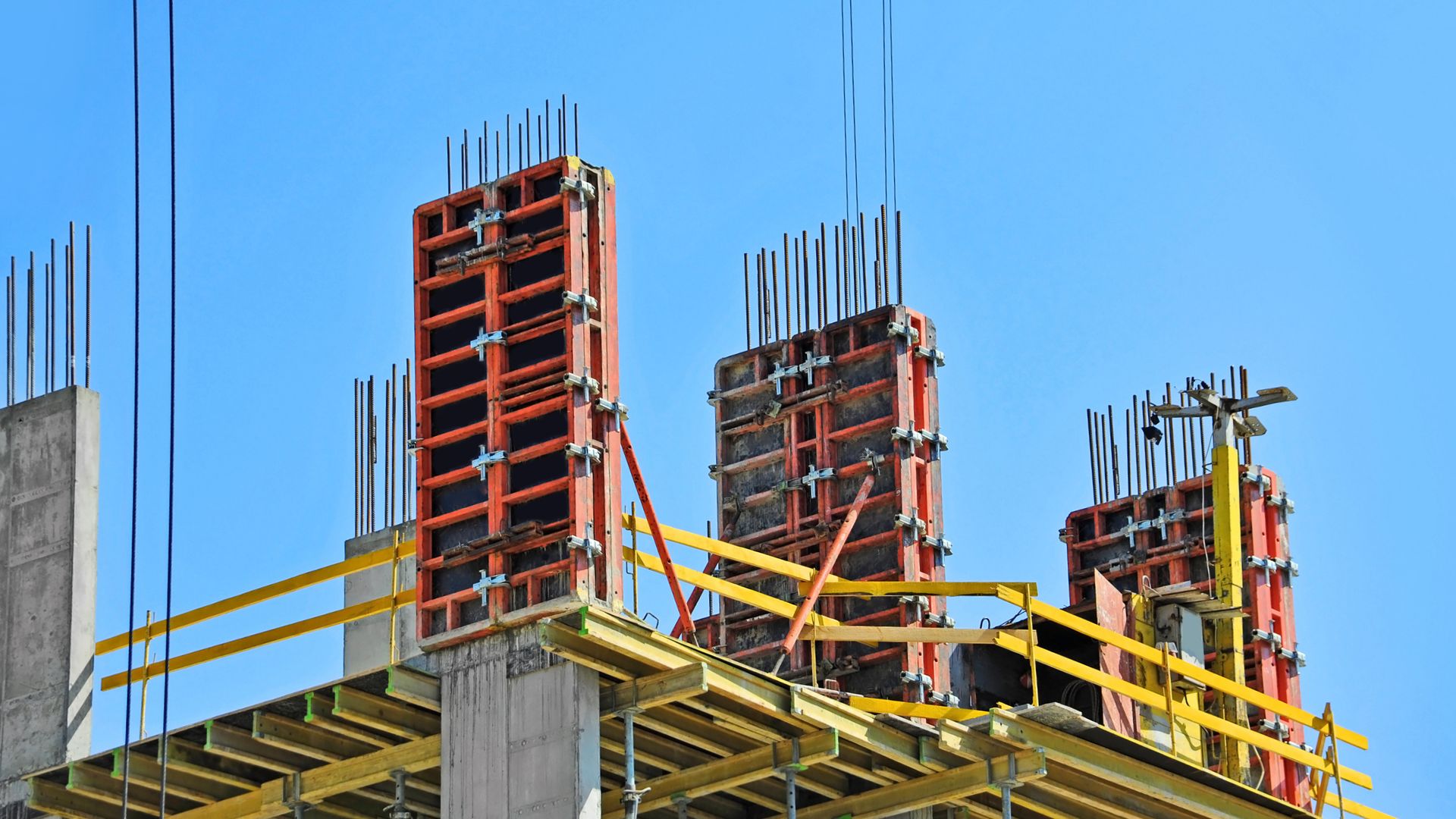During construction, workers need support when performing tasks at different heights. The same goes for materials such as concrete until they harden and can bear their weight. Temporary structures like scaffolding and formwork serve this purpose. This article will explain their functions and covers used to enhance effectiveness.
What Is Scaffolding?
Scaffolding is a modular system consisting of boards, couplers, and tubes made from metal, wood, or bamboo. It provides support on platforms over which workers can carry out the construction.
This temporary structure is versatile and allows flexibility for different project requirements. It can serve as a platform for painting the exteriors of a building, as a bridge, walkway, ramp, or bracing props.
Designed with care in mind, it ensures stability to support groups of people moving about. It can also hold heavy materials while providing access to the building at higher levels. The handrails enhance safety by preventing falls from elevated platforms.

Covers are attached to scaffolds for added protection, and these are:
1. Scaffold sheeting
These sheets shield construction sites from adverse weather like high winds. The thicker they are, the better the protection they can provide. They securely attach to scaffolding poles by fastening them with toggle ties.
2. Debris netting
Allows air to pass through while containing debris through its holes. The net keeps pedestrians safe from falling objects, including onsite workers, from falling.
3. Shrink wrap
The shrink-to-fit and heat-sealed joints make it invaluable for scaffolding projects. The drum-tight covering won’t flap or tear in strong winds, unlike standard sheeting. It’s ideal for full encapsulation needs and long-term projects.
What Is Formwork?
Formwork is used as a mould for columns, beams, slabs, and so on, in which concrete is poured and hardened. It needs the strength to withstand the weight of the concrete as it firms up. Otherwise, it can bend or break. Among the good characteristics of a good formwork include:
- It needs to endure various loads like concrete’s dead weight and live load during and after casting. Dead weight refers to the permanent weight of the structure and its attached components. Live loads are variable weights that may or may not be present at any given time or location on the structure.
- It must be leak-proof to prevent concrete seepage and rigid to prevent bending under the weight of wet concrete. Ideally, it should be as lightweight as possible for ease of handling and installation.

Accidents may occur if formwork is removed before concrete sets. Hence, it should remain in position for a specified duration post-pouring. In some cases, a damp blanket is applied to the outer surface for added protection. It’s also designed to prevent moisture from reaching the concrete slab.
Steel has a smooth surface and has greater rigidity than timber when it comes to the material. Though steel formwork costs more upfront, it offers greater advantages over its counterpart. This includes less possibility of warping and shrinkage.
Scaffolding vs Formwork
Both structures serve distinct functions and entail specific requirements. Scaffolding is employed for tasks like painting, plastering, and moving around the building. In contrast, formwork is utilised to mould concrete elements such as columns or beams.
Need more advice or information? Our 5-star rated customer service is ready to help you with further queries. You can contact us via hello@s-pgroup.comor call us at +44 (028) 9442 8611 to get a quote.